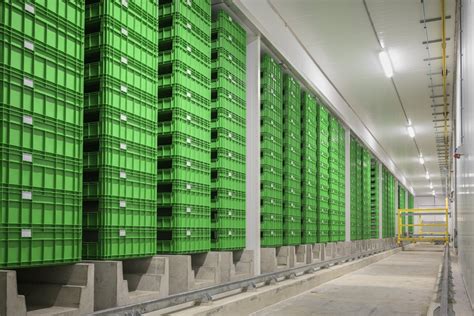Introduction
Insect farming, the practice of rearing insects for food, feed, and other products, has gained significant attention as a sustainable alternative to traditional livestock production. However, the industry faces several challenges that hinder its widespread adoption. This article will delve into the key challenges faced by insect farmers and explore the strategies and innovations that can improve cost-effectiveness and drive the industry’s growth.

Challenges and Obstacles in Insect Farming
1. Scalability and Production Optimization
Scaling insect farming to meet increasing demand requires addressing challenges in production efficiency and consistency. Factors such as optimizing insect diets, ensuring optimal temperature and humidity, and reducing mortality rates are crucial for maximizing yields and reducing production costs.
2. Feedstock Availability and Sustainability
The availability of sustainable and affordable feedstock is essential for cost-effective insect production. Identifying and securing reliable sources of organic waste, such as food scraps, crop residues, and animal manure, is critical for scaling insect farming while minimizing environmental impact.
3. Regulatory and Policy Frameworks
The lack of clear regulatory frameworks for insect farming in many countries poses challenges for industry growth. Establishing clear guidelines for food safety, feedstock quality, and environmental management is crucial for ensuring consumer confidence and attracting investment.
4. Public Perception and Consumer Acceptance
Overcoming cultural barriers and negative perceptions associated with insect consumption remains a significant challenge. Educating consumers about the nutritional value and environmental benefits of insect-based products is essential for driving acceptance and demand.
Cost-Effectiveness Strategies for Insect Farming
1. Automation and Technology Integration
Adopting automation and advanced technologies can significantly reduce labor costs and improve production efficiency. Investing in automated feeding systems, temperature control mechanisms, and monitoring sensors can optimize insect rearing conditions and minimize labor requirements.
2. Maximizing Feed Conversion Efficiency
Optimizing feed utilization is crucial for cost reduction. Research and development efforts aimed at improving feed formulations, identifying nutrient-rich ingredients, and reducing feed wastage can enhance insect growth rates and reduce production costs.
3. Value-Added Product Development
Exploring new applications for insect-derived products can increase revenue streams and improve profitability. Developing high-value ingredients, such as chitin and proteins, for various industries, including pharmaceuticals, cosmetics, and agriculture, provides opportunities for additional income generation.
4. Collaboration and Partnerships
Establishing partnerships with research institutions, universities, and waste management companies can provide access to expertise, resources, and sustainable feedstock sources. Collaborative projects can also drive innovation and reduce the costs associated with research and development.
Comparison of Pros and Cons
| Factor | Pros | Cons |
|---|---|---|
| Sustainability | Reduced environmental impact, low carbon footprint | Land and energy requirements |
| Nutritional Value | High protein content, rich in vitamins and minerals | Potential for food allergies |
| Scalability | High growth rates, potential for mass production | Limited scalability in certain species |
| Cost-effectiveness | Automation and technology can reduce costs | Input costs (e.g., substrate, feed) can be significant |
| Consumer Acceptance | Growing awareness of environmental benefits | Cultural barriers and perception issues |
Highlights and Opportunities
1. Nutrient-Rich Food and Feed Additives
Insect-based protein powders, oils, and other ingredients offer nutritionally dense alternatives to traditional animal-sourced products. These ingredients can enhance the nutritional value of pet food, aquaculture feed, and livestock rations.
2. Pharmaceutical and Biomedical Applications
Insect-derived enzymes, antimicrobial peptides, and other bioactive compounds have promising applications in pharmaceuticals, cosmetics, and wound healing products. Research in this field is expanding rapidly, creating opportunities for innovation and value-added product development.
3. Sustainable Waste Management
Insect farming offers a sustainable solution for managing organic waste from food production, agriculture, and municipalities. Insects can consume and convert organic waste into valuable protein and biodegradable frass that can be used as fertilizer.
Conclusion
Insect farming holds immense potential as a sustainable and cost-effective source of protein and other products. However, addressing the challenges related to scalability, feedstock availability, regulatory frameworks, and consumer perception is crucial for the industry’s growth. By embracing automation, maximizing feed conversion efficiency, exploring value-added product development, and fostering collaboration, insect farmers can enhance their cost-effectiveness and unlock the full potential of this emerging industry. As consumer awareness and demand for insect-based products continue to grow, insect farming is poised to become a significant contributor to the global food system in the years to come.





















